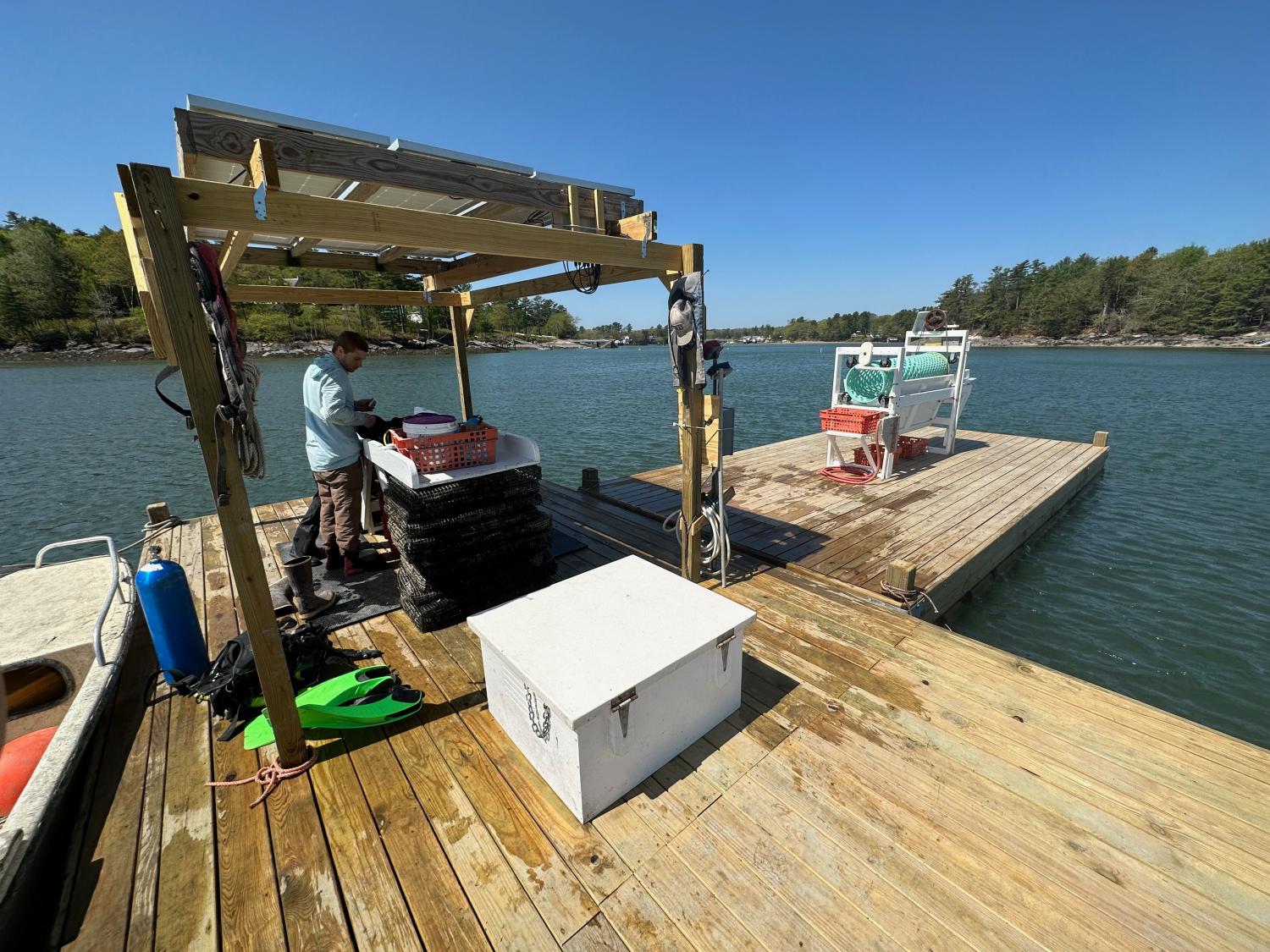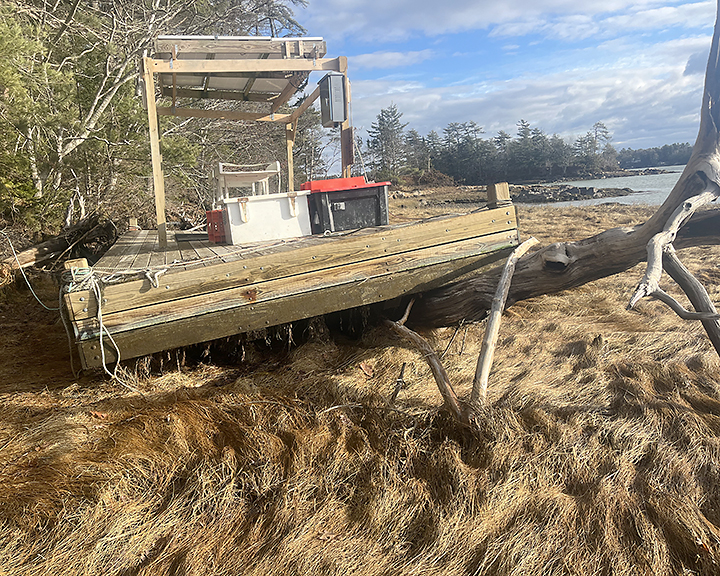
Oyster Farming with a Focus on Climate: Max Burtis
It’s quiet out on the New Meadows River oyster farm where 24-year-old Max Burtis is looking down over this year’s oyster crop. The water silently reflects his orange overalls and the silhouette of his solar-powered oyster float.
“I like being on the water, it’s generational,” he said.
Burtis, a 2022 University of Maine grad with a degree in mechanical engineering, founded his own oyster farming business Ferda Farms in 2018. Unlike most oyster farms that use roaring combustion engines and generators to run pumps and tumblers, his is powered by a solar panel and battery bank system that he designed and made himself for about $5100—paid in part with a SPARK Grant from the Island Institute.
It’s not just easier on his ears and his bottom line, but also better for the climate.
“The neighbors probably appreciate it,” he jokes. “It’s logistically easier, everything is just out there and low maintenance. There are no engines breaking down, no oil changes, no getting gas out to the float or things like that.”
Burtis is one of a growing number of young Mainers choosing to start their own sustainably-minded businesses in the state. He’s using his 10 years of experience in fisheries to run Ferda Farms, which co-owns with his father. In addition to the day-to-day operation of the farm, Burtis uses his engineering skills to design renewable energy powered aquaculture systems for other aquaculture producers on the side.
“Much of the youth is leaving the industry, and many of the full-time harvesters fear the future,” he said. “I see aquaculture as a way to hedge against the variability of the wild resources and a way to ensure the fishing way of life for coastal communities.”
Oysters are filter feeders that help improve water quality, and Burtis’s floating farm itself provides a buffer in storms. Since his farm currently occupies two acres, with plans to expand to three, his operation is helping make a big impact.
 “A single oyster can filter up to 50 gallons of water per day,” he said. “Oyster farms also act as natural barrier that can reduce the impact of storm surges and wave energy, protecting coastlines from erosion and providing a buffer against extreme weather events.”
“A single oyster can filter up to 50 gallons of water per day,” he said. “Oyster farms also act as natural barrier that can reduce the impact of storm surges and wave energy, protecting coastlines from erosion and providing a buffer against extreme weather events.”
But like many Maine businesses, Burtis’s operation was not immune to the impacts of the January weather events along the coast. The 14.57 ft. storm surge during the January 13th storm, combined with the wind, took a toll.
“It broke our two work floats free and tossed them further up the shore. One of them landed on top of a fallen tree,” he said. “We’ll have to make sure in the future that we secure our floats better, use a kedge anchor to keep them from piling up on the shore, and make sure all future infrastructure can handle these extreme storm surges.”
Despite its challenges, Burtis has a positive outlook for the future of his farm. Last year he produced about 225,000 oysters, and he hopes to continue growing—to produce 350,000 oysters next year, find new markets, and eventually provide year-round employment opportunities in his community. About 80% of the market for his product includes raw bars, restaurants, and distributors in Maine, but also in NYC and Boston. 
“We all want our grandchildren to be able to make a living on the water, but this won't be possible unless we adapt to the changing climate,” Burtis says. “If wild harvesters like myself diversify with aquaculture we can reduce pressure on the wild resources. With aquaculture we can reseed the mudflats and protect shellfish from predation, ensuring the viability of the resource for future generations. Aquaculture is a technology that we can adopt to maintain our way of life.”